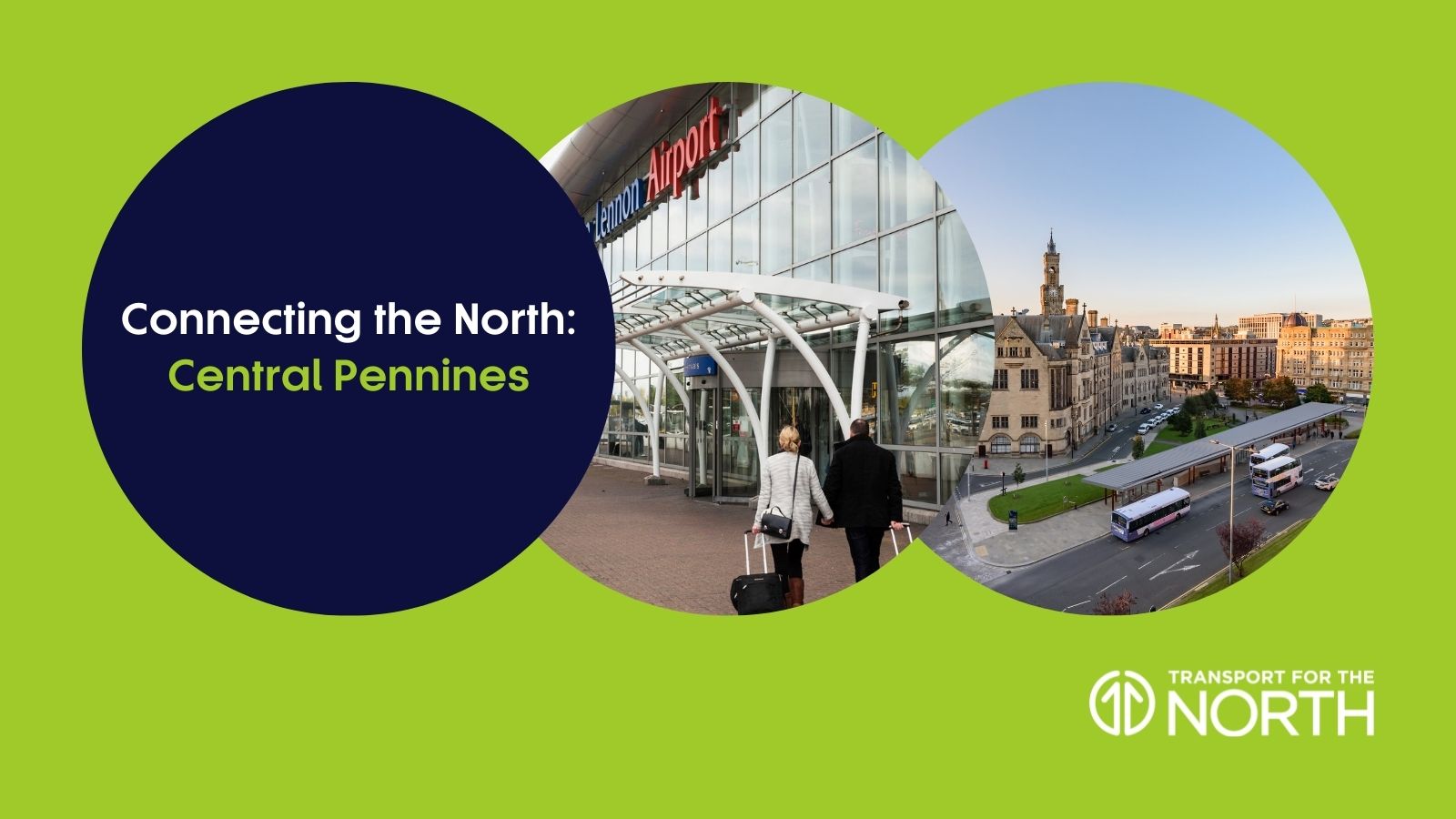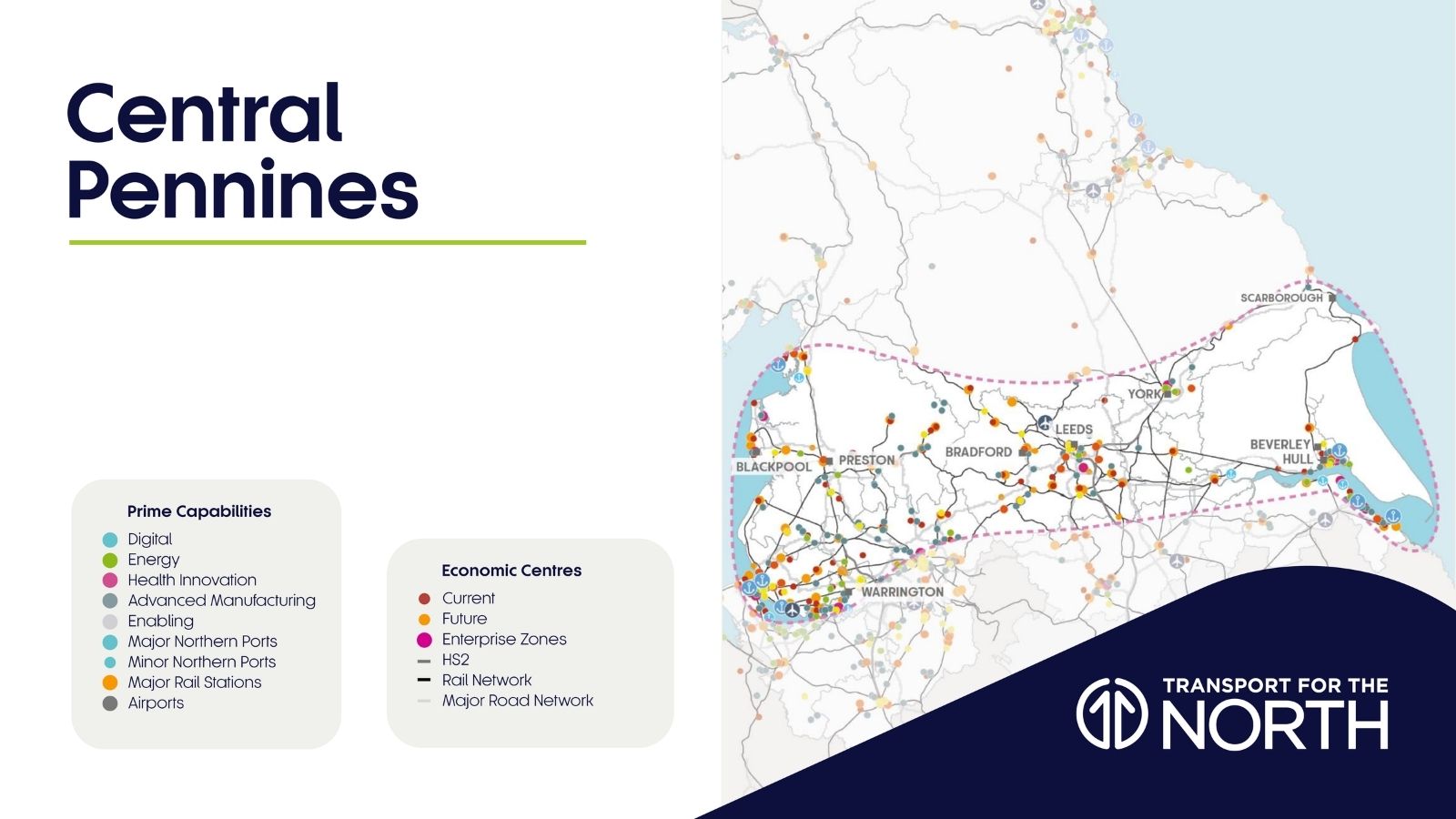As part of our work to develop northern transport infrastructure, we have set out seven Strategic Development Corridors (SDCs) across the north of England, with a focus on how to improve the quality and reliability of Northern transport systems, making them faster and more efficient for everyone.
Home to some of the North’s most important economic centres, the Central Pennines corridor covers a large area, including North Yorkshire, West Yorkshire, Hull and the Humber, Greater Manchester, Lancashire and Liverpool.
In this ‘Connecting the North’ Insights series, we will look in detail at each of these corridors to understand the progress that has already been made, and the future opportunities they will provide, with new insights from the local transport authorities.

The Central Pennines corridor includes world-renowned international businesses; from Rolls Royce to BAE Systems; supply chains and economic assets. This area of the north boasts the largest aerospace cluster in the UK, in addition to excellent automotive and advanced manufacturing facilities. Not only this, but freight and logistics is a key sector, with the thriving Port of Liverpool and other ports on the Humber playing a huge part in the shipping of goods, not to mention the bustling Leeds Bradford and Liverpool international airports.
Connecting some of the most important northern economic areas and their assets could help to create a globally competitive region. There is potential to unlock substantial economic growth and attract new business and investment, increasing employment opportunities and attracting new housing developments.
As part of Transport for the North’s Strategic Transport Plan, we are calling for investment into the Central Pennines area, to be able to rebalance decades of underinvestment into the North’s transport systems and to refresh road and rail travel capabilities, which to date, have not increased in line with growth of the economy and population.
The region needs investment into road and rail initiatives, with a key focus on improving travel on key lines such as Preston to Blackburn and Bradford to Leeds.

The West Yorkshire Combined Authority is working with us to develop the case for continued investment in the existing rail network. This includes upgrades to the East Coast Mainline to improve connectivity and the Calder Valley Line, which will have pan-northern benefits.
In the past ten years, train travel has increased by 96% across West Yorkshire – and it is therefore crucial that the Government prioritises upgrades to the existing north TransPennine rail line – between Manchester, Leeds and York, via Huddersfield, to improve journey times by 2022.
In order to ease areas known for congestion and guide traffic away from already-crowded town and city centres, investment into roads is required. One such example is Aire Valley in Leeds, which would benefit from enhanced highway access to support business activity, which is dependent on good, reliable road connections.
As part of the required investment into roads, more capacity is needed to serve the growing economy. Smart Motorway technology is already in place on parts of the M1 and M62, with more proposed by 2025. This allows the adjusting of speed limits, lane closures and use of the hard shoulder to improve the flow of traffic in real time. This will significantly reduce congestion and allow for more efficient travel on the M1, M62 and M621 and at junctions such as Chain Bar and Lofthouse, with more to follow.

When it comes to connecting the Central Pennines, regions including Lancashire and West Yorkshire have shared their thoughts on progress they have seen so far, as well as the potential opportunities that could develop if the connectivity gap was addressed.
Lancashire County Council, home to the largest aerospace cluster in the UK, the Samlesbury Aerospace Enterprise Zone, part of the Lancashire Advanced Manufacturing and Energy Cluster, relies on strong corridor links to grow and develop.
Transport planners in Lancashire recognise that road links tend to follow historic routes which are “dictated by topography rather than travel demand”. These roads are poorly aligned and are unsuitable for heavy vehicles and large volumes of road traffic.
When journey times are poor and unreliable, it is difficult to encourage agglomeration between economies, even when it comes to manufacturing and efficient movement of freight.
They went on to explain that “rail links are also constrained by topography, with low line speeds, ageing infrastructure and capacity constraints, meaning that there is a significant impact on journey times and reliability. Both roads and rail are of a much lower quality than those further to the south”.
East Lancashire in particular has a relatively self-contained travel to work area, with very few people commuting outside of its boundaries. Currently, the M65 ends abruptly at Colne, making the inter-regional route ineffective despite comprising one of the most heavily trafficked trans-Pennine road corridors.

Unfortunately, travel times and service frequency are unattractive for business trips and commuting. The use of the rail network, more specifically in East Lancashire is relatively low when compared with neighbouring areas; although brand new diesel trains have been introduced on services between Blackpool North and York, this does not address current frequency and journey time challenges.
Lancashire County Council and its partners are currently awaiting the Government’s response to two strategic studies commissioned by the Department for Transport aimed at addressing the connectivity gap in the Central Pennines through a much-improved strategic road link between the M65 and the A1(M), as well as the reinstatement of the Colne to Skipton railway line. The latter would open up new opportunities for the transportation of freight by rail across the Pennines.
If connectivity in Lancashire isn’t enhanced, there will be critical restrictions to the growth potential of the corridor and the wider Northern economy.